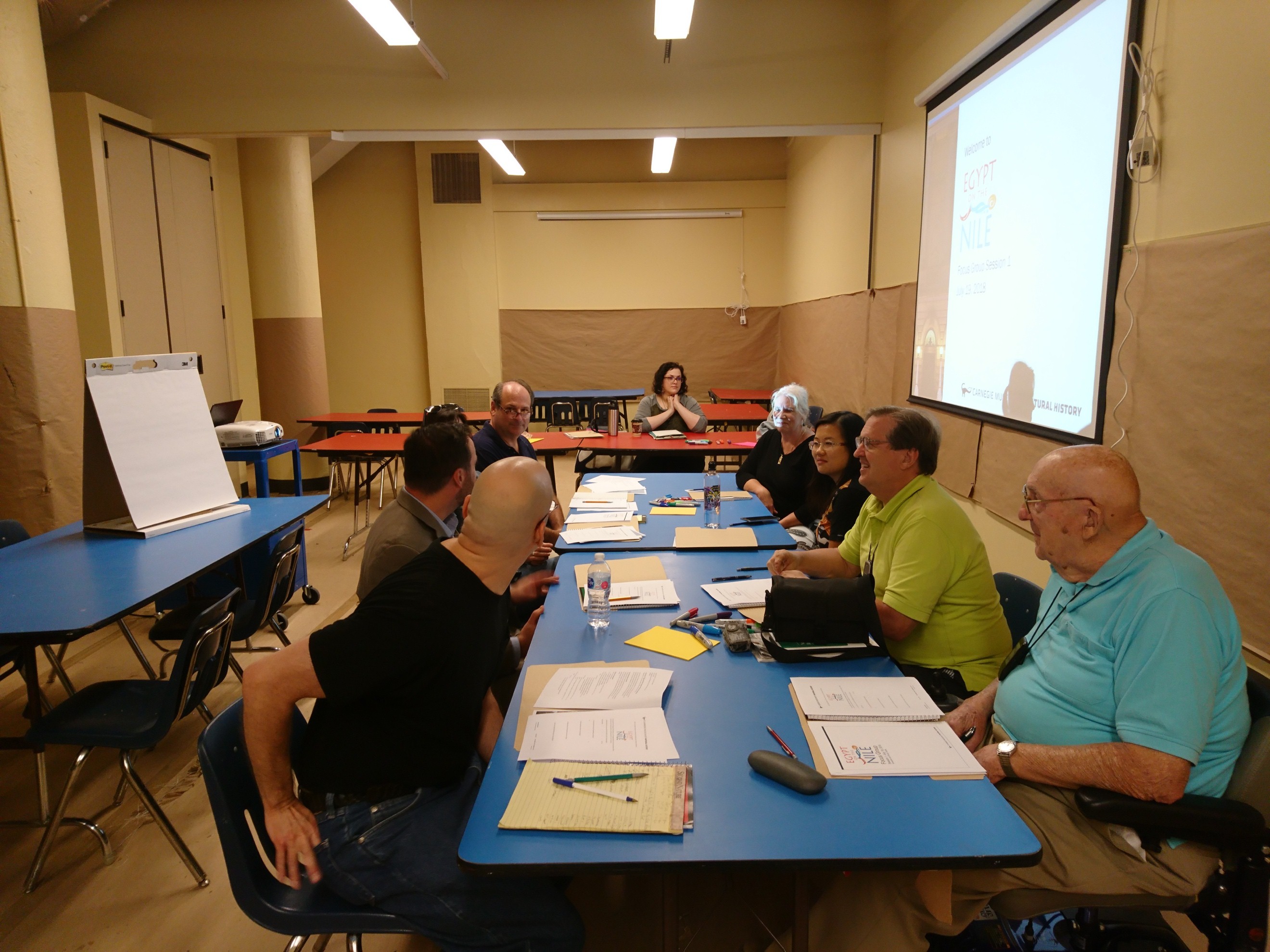Author: Alec Story, Milton Fine Museum Profession Fellow at the Carnegie Museum of Natural History – Summer 2018
When preparing for the installation of a new permanent exhibition, museums often assess the needs and assumptions of the communities they serve. For its upcoming gallery rework entitled Egypt on the Nile, the Carnegie Museum of Natural History has been doing just that. Egypt on the Nile unites human and natural histories, a unique approach that differs from traditional Egypt-oriented galleries. The novelty of this concept necessitates properly gauging audience reactions to and receptions of the exhibition and its themes. Over the course of my summer fellowship I assisted curator Dr. Erin Peters in, among other things, the planning and execution of these community focus groups.
Paramount to this process was recruiting participants from a wide variety of backgrounds: museum members, college students, K-12 educators, and senior citizens. Diverse groups were chosen in order to accurately represent the thoughts and feelings of those who visit the Carnegie Museum of Natural History.
Prior to the focus group meetings, we created prompts and questions that participants could respond to, and a session schedule to ensure we used our time effectively. Questions were designed to be open-ended, promote discussion, and to tease out valuable information on the proposed exhibition themes. During the focus group sessions we used an array of strategies including surveys, sticky notes, and open discussion to gather relevant information. The focus group environment allowed anyone, regardless of education or experience with Egypt, to come in and share their thoughts on one of the most famous cultures of all time.
After the focus groups I was tasked with recording and synthesizing the data accumulated during each focus group. With this information the Egypt on the Nile team can even more successfully create an exhibit that both depicts all desired themes and does so in a way that is easily communicable to the public.
This experience has allowed me to see how museums plan exhibits, how exhibits are constantly undergoing change and adjustment, and how cultural institutions interact with the community.
Learn more about the Collecting Knowledge Pittsburgh initiative here

